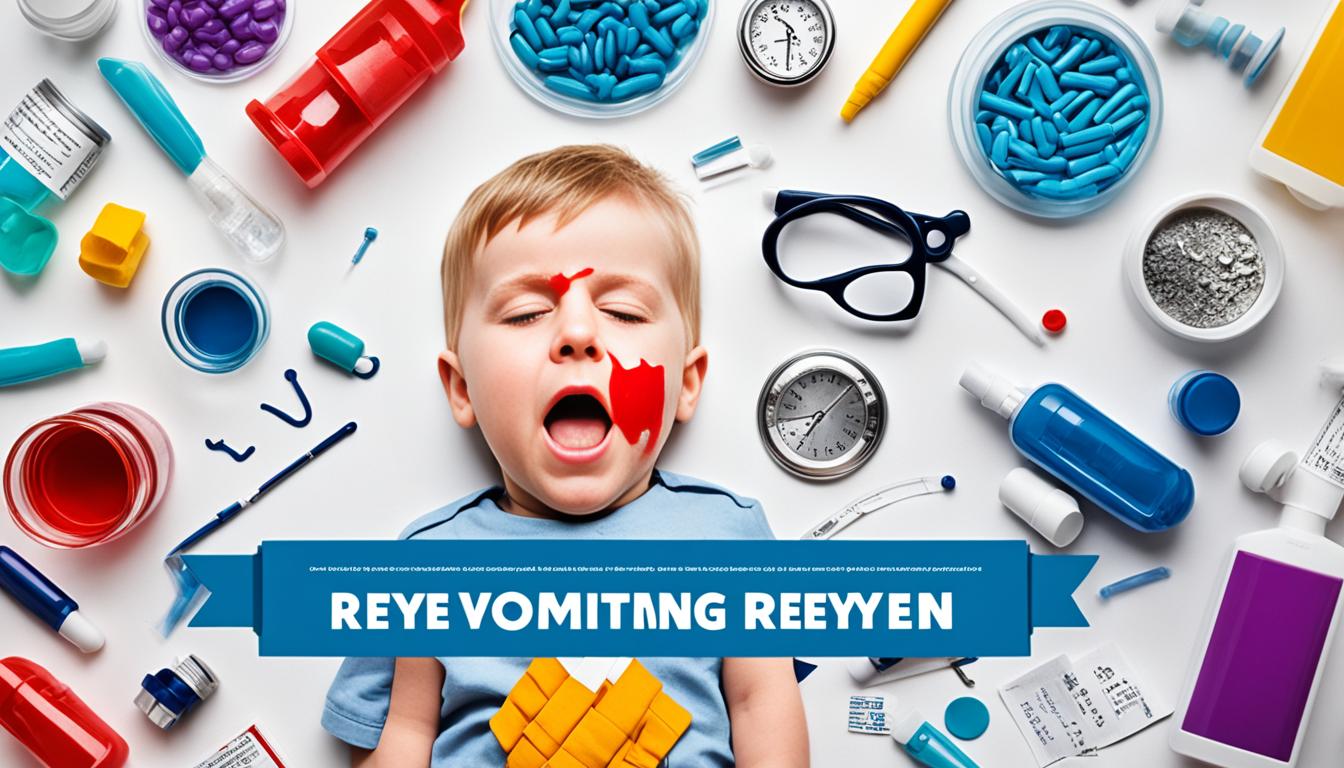Reye’s syndrome is a rare, dangerous disease. It mostly affects young people. Their brain and liver may swell, causing sudden sickness. Scientists aren’t sure what causes it. But, taking aspirin seems to be linked to the disease.
Children with Reye’s syndrome might vomit a lot or feel very tired. They could be confused or have seizures. Doctors check for these signs and do tests to diagnose it. Reye’s can hurt the brain, cause seizures, and slow down growth. To prevent it, kids should not take aspirin. It’s also good to get them vaccinated against certain viruses.
Key Takeaways:
- Reye’s syndrome is a rare and life-threatening condition that primarily affects children and teenagers.
- The exact cause of Reye’s syndrome is still unknown, but there is a significant link between the use of aspirin and the development of the condition.
- Symptoms of Reye’s syndrome include persistent vomiting, lethargy, confusion, seizures, and changes in behavior.
- The diagnosis is made through a combination of clinical symptoms and laboratory tests.
- Complications of Reye’s syndrome can include brain damage, seizures, liver dysfunction, and growth delay.
What Causes Reye’s Syndrome?
The exact cause of Reye’s syndrome remains a mystery. However, studies point to a connection with aspirin use, viral infections, and liver issues. Use of aspirin in children with viral infections is linked to a higher risk of Reye’s syndrome. When viruses, especially those affecting the respiratory system, are present, the body’s defense system may overreact. This leads to a buildup of fatty acids in the liver and brain. Children with certain metabolic disorders might also be at a greater risk.
Other factors that contribute to similar symptoms include hypoglycin from ackee fruit and acetaminophen. Yet, these substances are not confirmed causes of Reye’s syndrome.
Factors Associated with Reye’s Syndrome
| Causes | Role in Reye’s Syndrome |
|---|---|
| Aspirin | Increases the risk, especially during viral illnesses |
| Viral Infections | Triggers immune response leading to fatty acid accumulation |
| Liver Toxicity | Contributes to the development of Reye’s syndrome |
| Fatty Acid Oxidation Disorders | Underlying metabolic disorders that increase susceptibility |
| Hypoglycin from Ackee Fruit | Associated with similar symptoms but not known to cause Reye’s syndrome |
| Acetaminophen | Associated with similar symptoms but not known to cause Reye’s syndrome |
Symptoms and Diagnosis of Reye’s Syndrome
Reye’s syndrome is rare and dangerous, hitting mostly kids and teens. It’s key to spot the signs early and get a quick diagnosis. This can make treatment more effective.
Common signs of Reye’s syndrome include:
- Persistent vomiting
- Lethargy
- Confusion
- Seizures
- Changes in behavior
- Rapid breathing
- Muscle weakness
These can show up after a viral illness or symptoms like a cold or chickenpox.
Diagnosing Reye’s syndrome means checking how the liver and brain are doing. Doctors use different tests for this. The process includes:
- Looking closely at symptoms and any obvious signs
- Doing blood tests for liver and brain health
- Collecting cerebrospinal fluid with a lumbar puncture
- Using CT scans or MRIs to look at the brain and spine
Putting together this info helps doctors confirm if it’s Reye’s syndrome. Catching it early is crucial. This way, the right treatment can start sooner to lower risks.
Image
| Diagnostic Tests for Reye’s Syndrome | Key Information |
|---|---|
| Physical Examination | Evaluates symptoms and observes physical signs |
| Blood Tests | Checks liver and brain function |
| Lumbar Puncture | Examines cerebrospinal fluid |
| Imaging Tests (CT scans or MRIs) | Assesses the brain and spinal cord |
Treatment and Prevention of Reye’s Syndrome
Treating Reye’s syndrome focuses on reducing brain and liver swelling and stopping more harm. Doctors use IV fluids to hydrate patients. They also use drugs to shrink brain swelling and prevent seizures. They check blood sugar levels and might help with breathing if needed.
Doctors also treat any viral infections that might have caused Reye’s. In very severe cases, a patient might need a liver transplant.
To prevent Reye’s, avoid giving children aspirin and similar drugs during a viral illness. These medicines can increase the risk of the syndrome. Getting vaccinated for illnesses like chickenpox and the flu is key. Good hygiene, including washing hands and staying away from sick people, can also help.
Being careful with hazardous chemicals is important too. These substances could worsen Reye’s symptoms. Following these steps can protect children from Reye’s syndrome.

